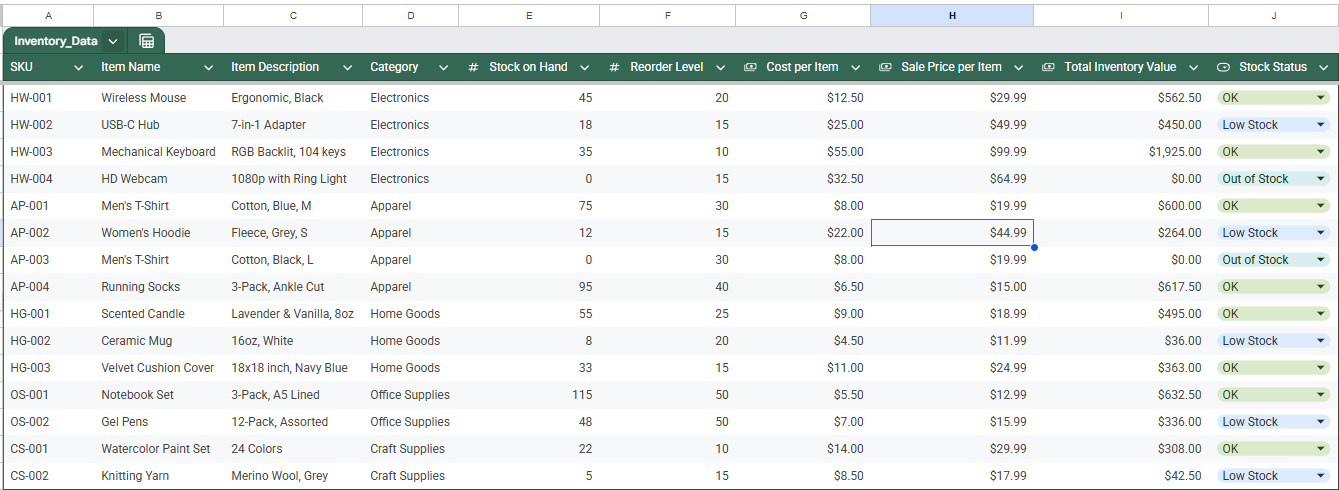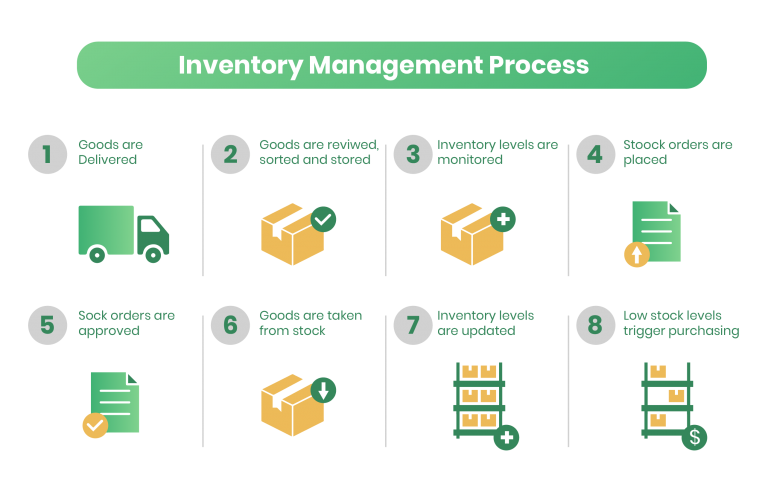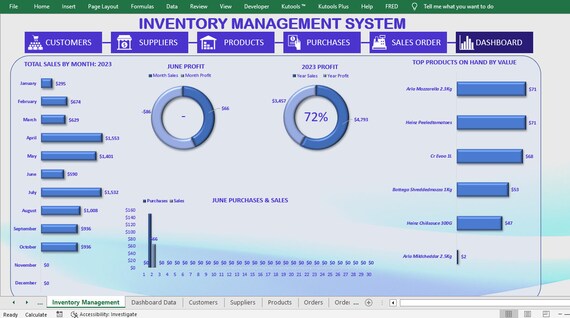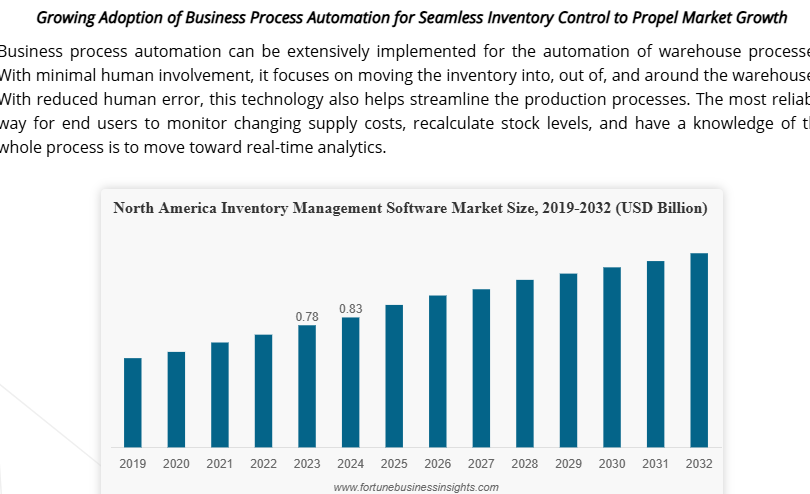If you’re running a small business, there’s a good chance you’ve already struggled with this question: Should I keep managing my stock in Excel, or is it time to switch to an inventory management system?
It’s a really Difficult choice. On one hand, spreadsheets are free, familiar, and surprisingly flexible. On the other hand, you’re probably noticing that they eat up more time than you’d like and leave you nervous about making mistakes that could cost sales.
Think of it like transportation: Excel is your trusty bicycle. It’s reliable, it gets the job done for short trips, and you don’t have to spend extra to use it. But as your business grows, the “trips” get longer. Eventually, you’ll need more speed, power, and safety features—that’s where inventory software steps in as your first car.
The right answer isn’t “Excel is bad” or “Software is better.” The real question is: Where are you on your business journey right now? Let’s break it down.

Excel vs. Inventory Software: Which One Should Your Small Business Start With?
Starting with Excel (Your Trusty Bicycle)
If you’re just starting—maybe selling 20–50 items and shipping from your spare room—Excel can be the perfect starter vehicle.
The Pros of Using Excel
- It’s Free
When you’re bootstrapping a business, every dollar counts. Excel or Google Sheets cost nothing (or are already part of your setup), making them the ultimate “stock management software free” option. - It’s Completely Flexible
You can design your own columns, add notes, and track exactly what you care about. Want to include supplier details, reorder dates, or even a “last sold” column? Excel won’t say no. - The Learning Curve is Low
Most people already know the basics of Excel. Even if you don’t, it’s easy to find free tutorials online. You can be up and running in an afternoon without needing IT support.

The Cons of Using Excel
- Prone to Human Error
Forget to update your spreadsheet after a sale? That item might look like it’s still in stock when it’s not. A single mistake can mean overselling or disappointing a customer. - It’s Not Real-Time
Your spreadsheet doesn’t update itself. If you sell the same item on Etsy and Shopify, you’ll need to manually adjust inventory after every sale—and that’s a recipe for mistakes.
It Doesn’t Scale
Excel works fine for 20 products. But once you’re managing hundreds across multiple platforms, the spreadsheet grows messy and fragile. At that point, the “bicycle” starts wobbling.
The Power of Dedicated Inventory Software (Your First Car)
When your business starts picking up speed, spreadsheets begin to feel clunky. This is when stock management software—your first car—becomes essential.
The Pros of Inventory Software
- Real-Time Accuracy
A proper inventory tracking system updates stock levels automatically across all your sales channels. That means no more worrying about selling items you don’t have. - Automation Saves Time
Software can handle tasks you’d otherwise do manually: generating purchase orders, sending low-stock alerts, and syncing with your e-commerce platforms. Hours of spreadsheet work shrink into minutes. - Powerful Reporting for Growth
Beyond tracking, inventory software can show you your best sellers, slow movers, and seasonal patterns. These insights help you make smarter buying decisions and grow faster.
The Cons of Inventory Software
- The Cost Factor
Most inventory systems are subscription-based. Even simple inventory software can cost anywhere from $30 to $100 per month. That feels heavy when your margins are tight. - The Learning Curve
Every new system takes time to learn. While most platforms are designed to be user-friendly, expect a few days of trial and error before you’re comfortable.

The Tipping Point: 5 Signs You’ve Outgrown Excel
So, when should you trade in the bicycle for your first car? Here’s a practical checklist. If two or more of these ring true, you’re probably ready.
- You’ve sold an item that was out of stock. Nothing feels worse than canceling an order because the spreadsheet was wrong.
- You spend more than 3–4 hours per week just updating inventory spreadsheets. Time is money, and those hours add up.
- You can’t easily determine your best or worst-selling products. Without this data, you’re essentially flying blind.
- You have inventory in more than one location. Whether it’s a spare room, a storage unit, or even two retail shelves, Excel struggles to keep everything straight.
- The thought of a mistake in your spreadsheet keeps you up at night. That anxiety is a sign your system is holding you back.
Sound familiar? That’s your business telling you it’s time for an upgrade.

Choosing Your First Inventory Management Software
Making the jump doesn’t mean you need the fanciest system on the market. Start small, focus on essentials, and make sure it fits your workflow.
Features to Look For:
- Barcode scanning to speed up receiving and shipping.
- Low-stock alerts so you never miss a reorder point.
- E-commerce integrations with platforms like Shopify, Etsy, or Amazon to keep everything in sync.
- User-friendly dashboards that show you real-time stock levels at a glance.
When you start looking for simple inventory software, you’ll see options ranging from beginner-friendly tools to advanced material management software. For example, Zoho Inventory is a popular choice for small business owners because it covers the basics—stock tracking, order management, integrations—without overwhelming you.

If budget is your top concern, look for a stock management software free trial to test the waters before committing.
A Quick Warning: Don’t Overbuy”
“The goal is to upgrade from a bicycle to a reliable first car—not a Formula 1 race car. Many small businesses make the mistake of paying for advanced features they won’t use for years (like complex warehouse management or demand forecasting).
Start with software that nails the essentials you listed above: syncing, alerts, and simple reporting. You can always upgrade to a more powerful plan later. Focus on solving the problems you have today.”

Conclusion
Think of your inventory system as part of your business journey. Starting with Excel is smart. It’s free, flexible, and perfect for the early days. But as your business grows, you’ll naturally reach a point where the bicycle just can’t keep up.
That’s when investing in inventory software isn’t just about convenience—it’s about protecting your time, your sanity, and your customers’ trust.
So instead of asking, “Should I use Excel or software?” ask yourself, “Am I still on the bicycle stage, or is it time for my first car?”
Don’t think of the switch as an expense. Think of it as an investment in efficiency and peace of mind. Start by evaluating your own “tipping point” signs today—you’ll know exactly when it’s time to upgrade.
read our other blogs on how can small business leverage ai into their business.

